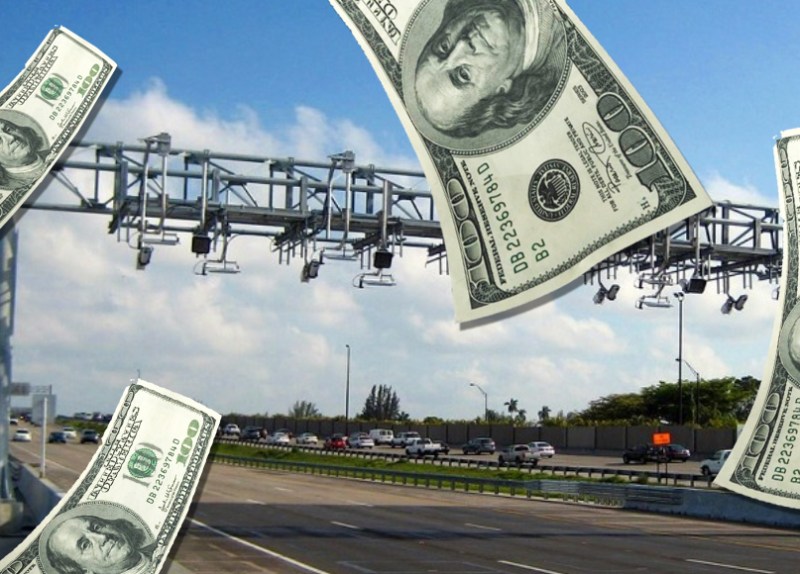Get a Load of the Congestion Pricing Exemptions that Some People Want

The MTA has released the final environmental assessment for congestion pricing, an even-more-massive document than the hulking multi-volume draft environmental assessment the agency released last August. One thing that makes this final document even larger than the first one is the inclusion of multiple appendices including comments the MTA received during its public listening tour on the traffic toll. And included in one of those 900-pages of appendices is a list of every requested discount for, or exemption from, congestion pricing. Some are actually being considered, some read like parodies of the exemption process, but what we can say for sure is that the Traffic Mobility Review Board should carefully strike most, if not all, of these proposals when it devises the actual list of exemptions and discounts.
Reminder: Under state law, congestion pricing must raise $1 billion per year. So any exemption for one group of drivers is a higher toll for everyone else.
(We have cut redundant ones, so that’s why the numbers don’t run consecutively.)
Labels
† Yes
†† Yes, but only a discount
* No!
** Hell, no!
*** The fuck no!
¿ Huh?
1. Artists *
2. Auto commuters from New Jersey **
3. Auto commuters from Orange County (NY) **
4. Auto commuters from Rockland County (NY) **
5. Auto commuters from Staten Island **
8. Buses – Commuter †
9. Buses – Interstate †
10. Buses – MTA †
11. Buses – Private carriers †
12. Buses – Private carriers providing transit/commuter service †
13. Buses – School †
15. Caretakers *
16. Carpoolers ††
17. Civil servants *
18. Community service providers that provide service in Manhattan Community District 3 ††
19. Drivers – Infrequent *
20. Drivers – New York State-registered plates with a Manhattan CBD ZIP code *
21. Drivers – New York State-registered plates in Manhattan *
22. Drivers – New York State-registered plates in New York City *
23. Drivers – Staten Island **
24. Farmers ††
25. Federal law enforcement agencies ***
26. First responders *
27. FHVs *
28. FHVs – licensed by the New York City TLC *
29. FHVs – wheelchair-accessible (regardless of whether being used for disabilities) *
30. Government vendors (e.g., Outfront, a contractor for MTA) ***
31. Low-income drivers ††
32. Low-income immigrants *
33. Low-income residents ††
34. Medical patients *
35. Members – International Union of Operating Engineers *
36. Musicians *
37. Non-emergency medical transport (which is an expense covered by health insurance) *
38. Parents **
39. Persons attending religious services **
40. Persons of color *
41. Persons on fixed incomes *
42. Persons with disabilities (in addition to vehicles transporting them) ††
44. Residents – Brooklyn *
45. Residents – Manhattan CBD *
46. Residents – Manhattan CBD, but make it temporary and phase it out *
47. Residents – Manhattan CBD, who garage their vehicles **
49. Residents – Manhattan CBD, with household incomes at or below the Area Median Income ($67,046) ††
50. Residents – Manhattan CBD, with household incomes less than $150,000 ***
51. Residents – Manhattan CBD, with individual income less than $100,300 *
52. Residents – Long Island, battling cancer, 9/11-related illness, and other serious diseases *
61. Residents – Waterside Plaza *
62. Retirees – NYPD ***
63. Retirees – NYPD detectives ***
64. Reverse commuters living in the Manhattan CBD *
65. Senior citizens *
66. Small business owners *
67. Students – City University of New York *
68. Students – receiving special education *
73. Vehicles – agricultural transporting farm products ††
74. Vehicles – American Red Cross, dispatched from within the Manhattan CBD *
75. Vehicles – Con Edison ***
76. Vehicles – construction *
77. Vehicles – delivery *
78. Vehicles – diplomatic license plates ***
79. Vehicles – electric *
80. Vehicles – emergency †
81. Vehicles – emergency roadside †
82. Vehicles – food delivery *
83. Vehicles – food delivery, fruits and vegetables to Manhattan Community District 3 *
84. Vehicles – food delivery to the homebound (Coalition for the Homeless, Encore, God’s Love We
Deliver) †
85. Vehicles – fuel delivery *
86. Vehicles – hearses *
89. Vehicles – motorcycles ††
90. Vehicles – noncommercial *
91. Vehicles – nonprofits *
92. Vehicles – passenger cars ***
93. Vehicles – providing social services ††
94. Vehicles – required for heavy work equipment *
95. Vehicles – student transport for Fordham University *
96. Vehicles – tow trucks ††
97. Vehicles – transporting medications to pharmacies in Manhattan Community District 3 *
98. Vehicles – trucks **
99. Vehicles – using parking garages in the Manhattan CBD (daily or monthly) *
100. Vehicles – whose manufacturers participate in the “circular economy” ¿
101. Veterans *
102. Workers – City **
103. Workers – construction **
106. Workers – doctors **
107. Workers – essential *
108. Workers – FDNY/EMS *
109. Workers – health care *
111. Workers – judges ***
113. Workers – NYPD members ***
114. Workers – overnight *
115. Workers – pharmacists *
117. Workers – teachers ***
118. Workers – teachers, only New York City Department of Education (not Charter schools) **
119. Workers – trades (e.g., electricians, plumbers, HVAC technicians) **
120. Workers – waste and recycling industry **





